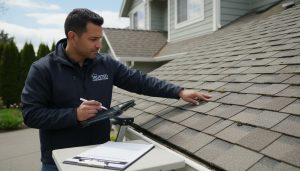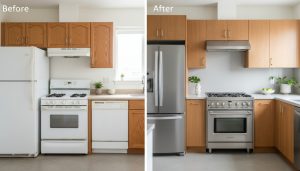What issues do inspectors commonly find in
Ontario homes?
Discover the 12 biggest inspection problems Ontario homes hide — and how to handle them fast.
Why this matters now
Buying or selling in Ontario without a clear inspection game plan costs time and money. Inspectors look for the same common failures across the province. Know them, act on them, and you win the deal or protect your investment.
The 12 most common issues inspectors find in Ontario homes
- Roofing damage and aging shingles
- What inspectors see: missing shingles, curling, damaged flashing, ice-dam evidence.
- Action: get a roofing estimate. Replace or repair before listing. Expect $2,000–$10,000 depending on size and materials.
- Foundation cracks and water entry
- What inspectors see: horizontal cracks, efflorescence, wet basement.
- Action: consult a structural specialist for big cracks; basement waterproofing or exterior regrading for leaks.
- Poor drainage and grading
- What inspectors see: soil sloping toward the house, downspouts dumping at the foundation.
- Action: fix grading, extend downspouts, install eavestrough guards or a sump pump.
- Plumbing issues and outdated piping
- What inspectors see: leaks, polybutylene or galvanized pipes, low water pressure.
- Action: repair leaks, plan for repiping if old systems exist, check water heater age.
- Electrical hazards and code gaps
- What inspectors see: knob-and-tube, overloaded panels, missing grounding, outdated breakers.
- Action: hire licensed electrician to upgrade panel or add grounding. Safety first.
- Heating, ventilation and furnace problems
- What inspectors see: dirty combustion areas, age beyond 15–20 years, poor ventilation.
- Action: service the furnace, replace if inefficient. Document maintenance.
- Mould and moisture damage
- What inspectors see: visible mould, musty smell, signs of past water damage.
- Action: remediate mould, fix sources of moisture, get clearance testing if concern persists.
- Insulation and energy loss
- What inspectors see: insufficient attic insulation, gaps, cold drafts.
- Action: add insulation, seal air leaks, and improve windows if ROI makes sense.
- Windows and doors failing
- What inspectors see: rotting frames, failed seals, difficulty operating.
- Action: repair or replace, prioritize energy-efficient models where practical.
- Chimney, fireplace and venting defects
- What inspectors see: loose mortar, blocked flues, unsafe installations.
- Action: hire certified mason or chimney sweep; repair flashing and liners.
- Pests and wood-destroying insects
- What inspectors see: termite or rodent damage, nesting, droppings.
- Action: pest inspection, treatment, repair damaged wood.
- Lack of permits and non-code renovations
- What inspectors see: unpermitted additions, altered wiring or plumbing.
- Action: gather permits or disclose; consider bringing work up to code before sale.
Quick checklist for buyers and sellers
- Get a professional home inspection.
- Request quotes for major defects.
- Prioritize safety issues (electrical, structural, mould).
- Use a pre-listing inspection to speed the sale and reduce renegotiations.

Final direct advice
I advise clients in Ontario to treat inspection reports as negotiating power. Fix the safety issues; disclose the rest. Want a solid plan and fast estimates? Email tony@sousasells.ca or call 416-477-2620. Visit https://www.sousasells.ca for pre-listing help and market-ready strategies.
Contact now to avoid surprises at closing.





















